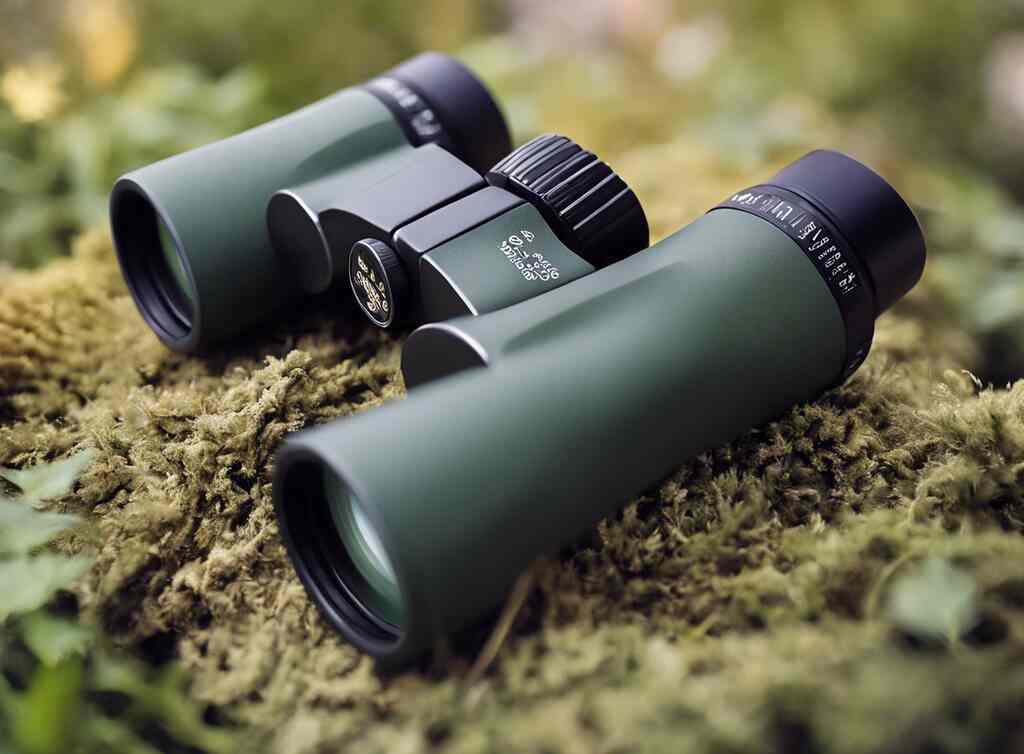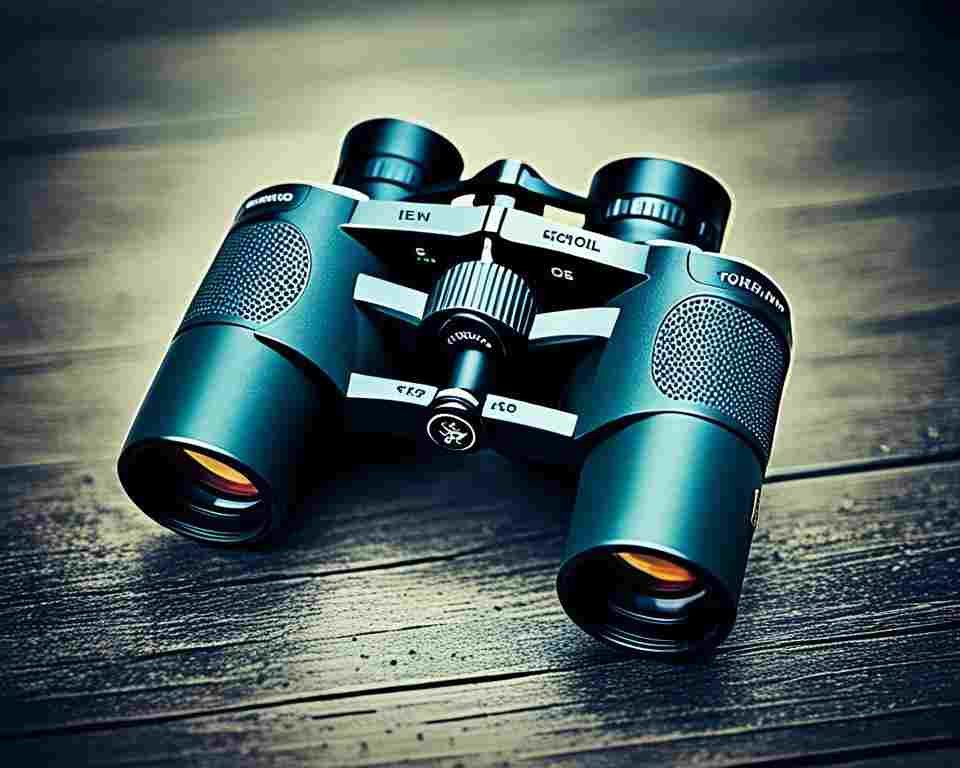Birdwatching is a captivating hobby that allows us to connect with nature and discover the incredible diversity of the avian world. One essential tool that every birdwatcher should have in their arsenal is a pair of quality binoculars.
In this comprehensive guide, we’ll explore why binoculars are a must-have for serious birdwatchers and how they can enhance your outdoor experiences.
Table of Contents
The Importance of Binoculars in Birdwatching
Binoculars are the primary way for birdwatchers to observe and identify birds in their natural habitat. Without them, you’d be limited to spotting only the largest or most conspicuous birds in your vicinity. With a good pair of binoculars, you can get a closer look at the intricate details of a bird’s plumage, its behavior, and even its unique characteristics that help with identification.
Moreover, binoculars allow you to observe birds from a respectful distance, minimizing the risk of disturbing them and ensuring a more natural and rewarding birdwatching experience. By bringing the birds closer to you, binoculars enable you to appreciate their beauty, study their mannerisms, and even witness rare or elusive species that might otherwise go unnoticed.
Choosing the Right Binoculars for Birdwatching
When it comes to selecting the perfect binoculars for birdwatching, there are a few key factors to consider:
- Magnification: Look for binoculars with a magnification power of 8x or 10x, which provides the right balance between field of view and detail.
- Objective Lens Size: Opt for binoculars with an objective lens size of 40mm or larger, as they tend to perform better in low-light conditions, which is common during early morning or evening birdwatching sessions.
- Lens Coatings: Choose binoculars with high-quality, multi-coated lenses, as they help reduce glare and improve image clarity.
- Waterproofing and Durability: Consider binoculars that are waterproof and fogproof, ensuring they can withstand the elements and provide reliable performance in various weather conditions.
- Weight and Ergonomics: Look for a pair of binoculars that are comfortable to hold and use, with a lightweight design that won’t cause fatigue during prolonged birdwatching sessions.
By carefully evaluating these factors, you can find a pair of binoculars that will elevate your birdwatching experience and help you discover the wonders of the avian world.
Choosing Binoculars for Every Birder:
Entry-Level: Celestron Nature DX 8×42
This is a great option for beginning birdwatchers seeking an affordable pair of binoculars. With 8x magnification and 42mm objective lenses, it offers a good balance of zoom power, light gathering, and portability. Expect a price range around $100-$150 USD. While image quality might not be top-of-the-line, it’s a functional and weather-resistant choice for casual birding adventures. See the Celestron Nature DX on Amazon for pricing and reviews.
Mid-Range: Vortex Diamondback HD 10×42
Stepping up in magnification, the Vortex Diamondback HD offers 10x zoom for getting closer views of birds. The 42mm objective lenses provide good low-light performance. This model features high-definition glass with multiple anti-reflective coatings for excellent image clarity and brightness. Expect a price range around $300-$400 USD. It’s a versatile option for serious birdwatchers who value good optics and durability. See the Vortex Diamondback HD on Amazon for pricing and reviews.
Premium: Nikon Monarch HG 8×42
Nikon’s Monarch HG is a premium choice for birdwatchers seeking top-notch optical quality. The 8x magnification offers a wide field of view for finding birds easily, while the 42mm objective lenses ensure excellent light transmission. This model boasts advanced lens coatings, ED (extra-low dispersion) glass for reducing color fringing, and a lightweight magnesium alloy body. Expect a price range around $500-$600 USD. It’s a great option for experienced birders who demand exceptional image clarity and durability. See the Nikon’s Monarch HG on Amazon for pricing and reviews.
Compact: Swarovski CL Companion 8×30
For those who prioritize portability, the Swarovski CL Companion is a fantastic choice. These compact binoculars offer 8x magnification and 30mm objective lenses, making them lightweight and easy to carry on long hikes. Despite their size, they deliver impressive optical performance with high-quality lenses and multi-coatings for clear viewing. Expect a price range of $1000+ USD. While on the pricier side, they are a great option for serious birdwatchers who value a high-performance, compact option. See the Swarovski CL Companion on Amazon for pricing and reviews.
Budget-Friendly Roof Prism: Bushnell Legend Ultra HD 10×42
This is a solid option for budget-conscious birders who prefer the sleek design of roof prism binoculars. With 10x magnification and 42mm objective lenses, it offers a good balance of features for the price. Expect a price range around $125-150USD. While not the most powerful option, it boasts good optics and weatherproofing for casual birdwatching adventures. See the Bushnell Legend Ultra HD E-Series on Amazon for pricing and reviews.
Remember, these are just a few examples, and the best binoculars for you will depend on your individual needs and budget. Consider the factors mentioned earlier (magnification, lens size, coatings, etc.) to narrow down your choices and try out different models in person if possible to ensure a comfortable fit.
Mastering the Art of Birdwatching with Binoculars
Once you have the right pair of binoculars, it’s time to put them to use and hone your birdwatching skills. Start by practicing focusing and scanning the environment, as this will help you quickly locate and identify birds. Pay attention to the size, shape, color, and behavior of the birds, as these characteristics are crucial for accurate identification.
Additionally, consider investing in a field guide or downloading a bird identification app to assist you in recognizing different species. With practice and patience, you’ll soon be able to identify birds by sight and even by their unique calls and songs.
Remember, birdwatching is not just about the destination – it’s about the journey. Embrace the process of learning, observing, and appreciating the feathered creatures that inhabit our world. Whether you’re a seasoned birdwatcher or just starting your adventure, binoculars will be your constant companion, unlocking a realm of avian beauty and wonder.
So, grab your binoculars, head outdoors, and immerse yourself in the captivating world of birdwatching. Who knows what remarkable sights and discoveries await you?
Maximizing Your Birdwatching Experience: Choosing the Right Optics
Binoculars: The Birder’s Essential Companion
When it comes to birdwatching, having the right optics can mean the difference between a satisfying experience and a frustrating one. Choosing the perfect pair of binoculars is crucial to maximizing your enjoyment and success in the field. In this article, we’ll explore the key factors to consider when selecting the ideal binoculars for your birdwatching adventures.
Magnification and Objective Lens Size
The two most important specifications to consider when choosing binoculars are the magnification and the objective lens size. Magnification, denoted by the first number (e.g., 8x), determines how much closer the subject will appear. A higher magnification can help you spot birds from a distance, but keep in mind that higher magnification also means a narrower field of view and a more challenging time keeping the image steady.
The objective lens size, denoted by the second number (e.g., 42mm), determines the amount of light the binoculars can gather. Larger objective lenses allow for brighter, clearer images, particularly in low-light conditions. However, larger lenses also mean heavier and bulkier binoculars, which can be less comfortable to carry for extended periods.
A good starting point for birdwatching is a pair of 8×42 or 10×42 binoculars. These offer a balance of magnification, field of view, and light-gathering capability, making them versatile and suitable for a wide range of birding situations.
Lens Coatings and Prism Type
In addition to magnification and objective lens size, other important features to consider are the lens coatings and the prism type used in the binoculars.
Lens coatings help reduce glare and improve light transmission, resulting in brighter, higher-contrast images. Look for binoculars with multiple layers of anti-reflective coatings, as these will provide the best optical performance.
The prism type, which determines how the light is bent and inverted, can also affect the image quality. Roof prisms are generally more compact and lightweight, while Porro prisms tend to offer a wider field of view and better depth perception. Both types have their advantages, so consider your personal preferences and needs when making your decision.
Weatherproofing and Durability
Birdwatching often takes place in outdoor environments, so it’s essential to choose binoculars that can withstand the elements. Look for models that are waterproof and fogproof, with a durable, rubberized body that can withstand the occasional bump or drop.
Some binoculars are also designed to be nitrogen-purged, which helps prevent internal fogging in cold or humid conditions. This feature can be particularly useful for those who plan to use their binoculars in a variety of weather conditions.
Ergonomics and Comfort
Don’t overlook the importance of comfort and ergonomics when selecting your binoculars. Factors like the weight, balance, and grip of the binoculars can significantly impact your overall experience. Try to hold and test different models to ensure they feel comfortable and natural in your hands.
Many binoculars also feature adjustable eyecups, which allow you to position the binoculars properly for your eyes and wearing glasses, if necessary. This can help reduce eye strain and fatigue during extended birdwatching sessions.
Choosing the right binoculars for birdwatching is crucial to maximizing your enjoyment and success in the field. By considering factors like magnification, objective lens size, lens coatings, prism type, weatherproofing, and ergonomics, you can find a pair of binoculars that will enhance your birdwatching experience and help you spot even the most elusive feathered friends.
Conclusion
Binoculars have become an indispensable tool for birdwatchers, enhancing their ability to observe and appreciate the feathered inhabitants of the natural world. Whether you’re a seasoned birder or a newcomer to the hobby, investing in a quality pair of binoculars can truly transform your birdwatching experience.
As we’ve explored, binoculars provide a closer, more detailed view of birds, allowing you to observe their unique behaviors, plumage, and subtle features that would otherwise be difficult to discern with the naked eye. With the right pair of binoculars, you can delve deeper into the fascinating realm of avian life, unlocking a whole new level of appreciation and understanding.
When it comes to choosing the right binoculars, there are a number of factors to consider, from the objective lens size and magnification power to the overall quality and durability of the optics. By carefully evaluating your needs and preferences, you can find a pair of binoculars that will perfectly complement your birdwatching pursuits.
For instance, if you’re primarily interested in observing birds in your backyard or at local parks, a compact and lightweight pair of binoculars might be the perfect choice. These models offer excellent portability and ease of use, making them an ideal companion for casual birding outings. On the other hand, if you have a passion for spotting rare or distant birds, a pair of binoculars with a larger objective lens and higher magnification might be more suitable, allowing you to get a clearer, more detailed view of your feathered subjects.
Regardless of your specific needs, it’s essential to invest in a quality pair of binoculars that will provide you with sharp, high-contrast images and a wide field of view. This not only enhances your ability to identify birds but also allows you to fully immerse yourself in the beauty and wonder of the avian world.
Furthermore, the durability and weather-resistance of your binoculars can be crucial factors, especially if you plan to use them in challenging outdoor conditions. Look for models that are built to withstand the elements, whether it’s rain, wind, or even the occasional accidental drop.
As you embark on your birdwatching adventures, remember that the right pair of binoculars can be a game-changer, transforming your observations and elevating your overall experience. By carefully selecting the perfect optics for your needs, you’ll be able to explore the vibrant world of birds with a newfound clarity and appreciation.
So, whether you’re a seasoned birder or just starting out, don’t hesitate to invest in a quality pair of binoculars. They are, without a doubt, an essential companion for any serious birdwatcher, unlocking a world of wonder and discovery that will enrich your appreciation for the feathered wonders of our natural world.




